Eradicating Invasive Plants for Beautiful Shade Structure
2025-03-06

Kenting National Park, located at Taiwan’s southernmost tropical tip, is a breathtaking haven of biodiversity, boasting vibrant ecosystems with a rich variety of flora and fauna. However, this natural paradise faces significant threats from invasive species, which locals have aptly nicknamed the “green cancer.” These non-native plants and animals disrupt the park’s delicate ecological balance by outcompeting native species and damaging habitats.
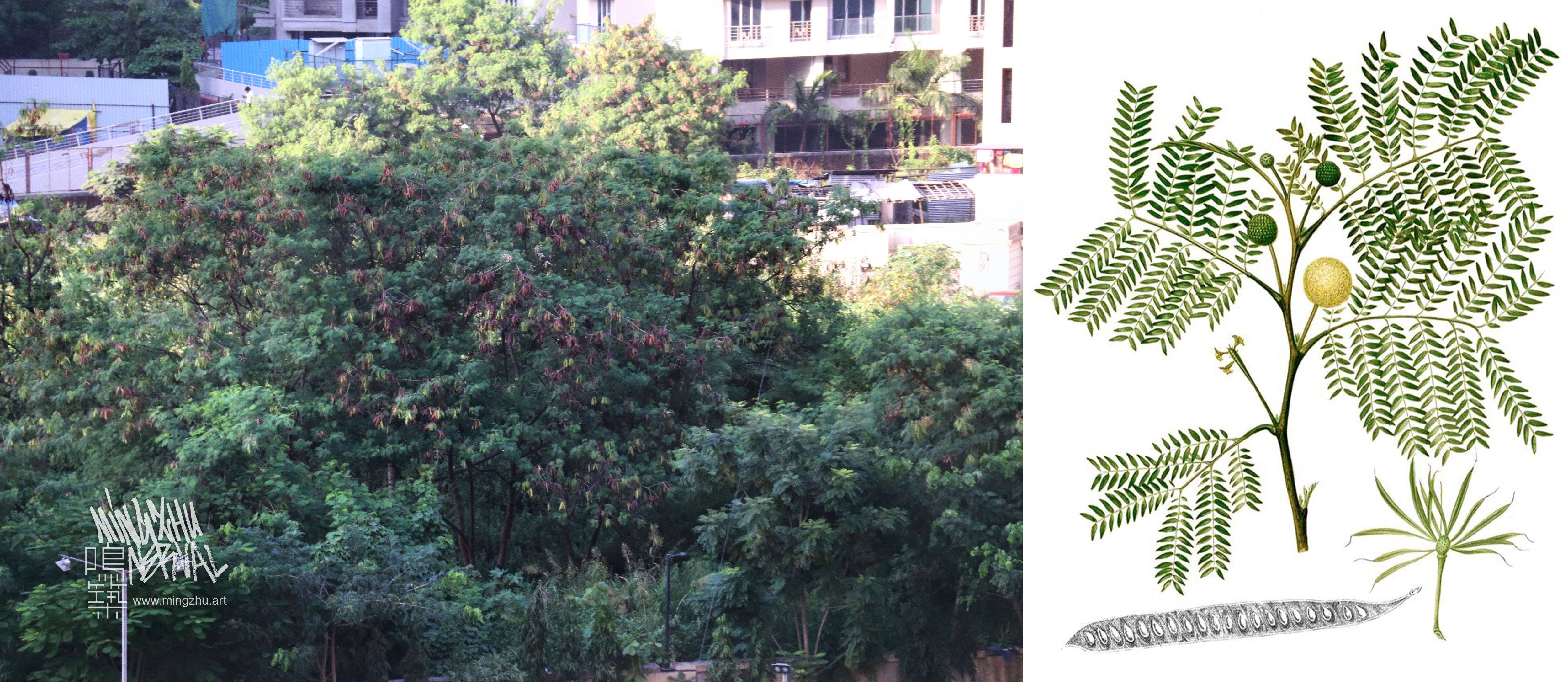
River tamarind (Leucaena leucocephala) is considered one of the 100 worst invasive species by the Invasive Species Specialist Group of the IUCN Species Survival Commission.
The plant was first introduced to Taiwan to make paper. However, this fast growing plant expanded quickly and forms dense thickets that crowd out all native vegetation.
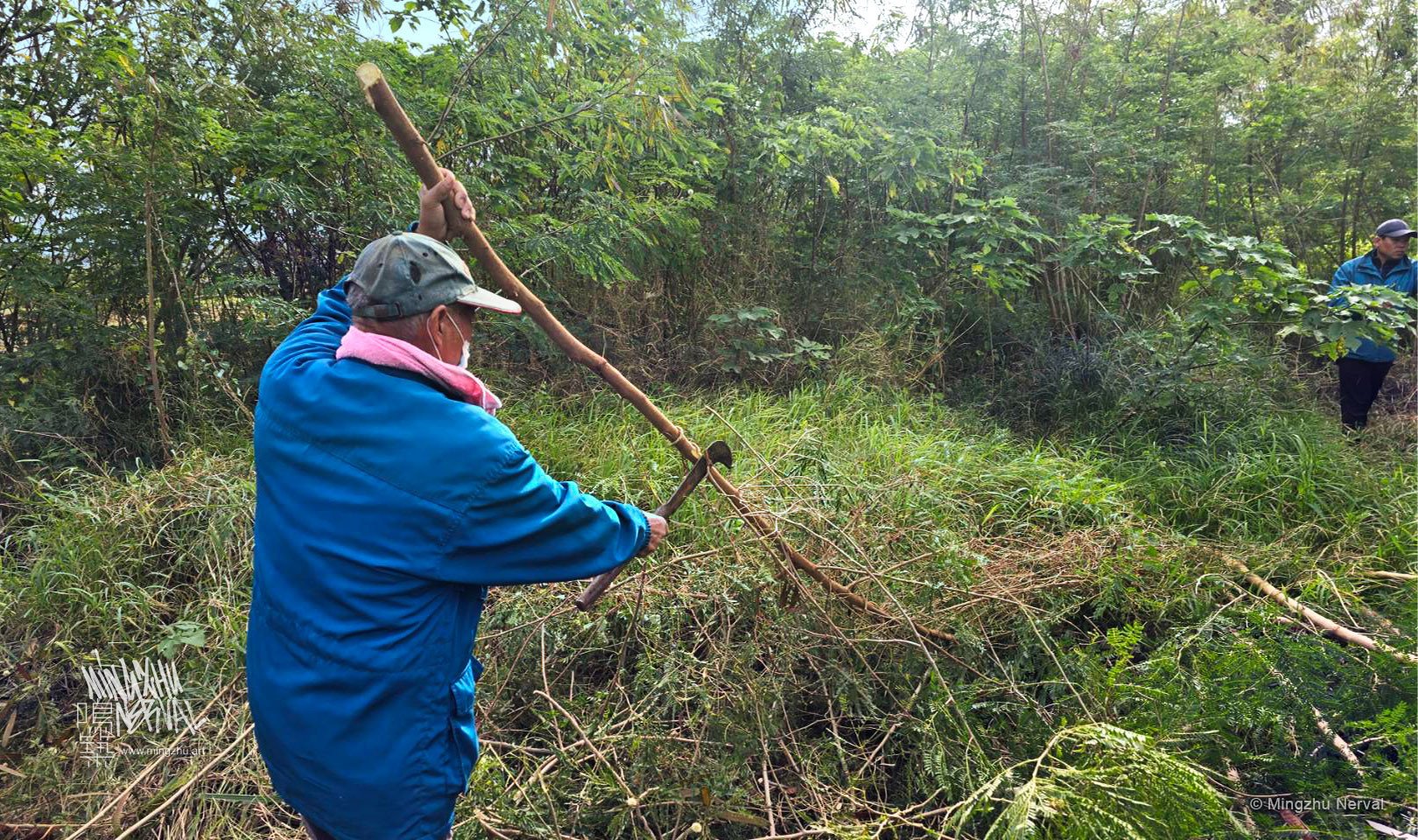
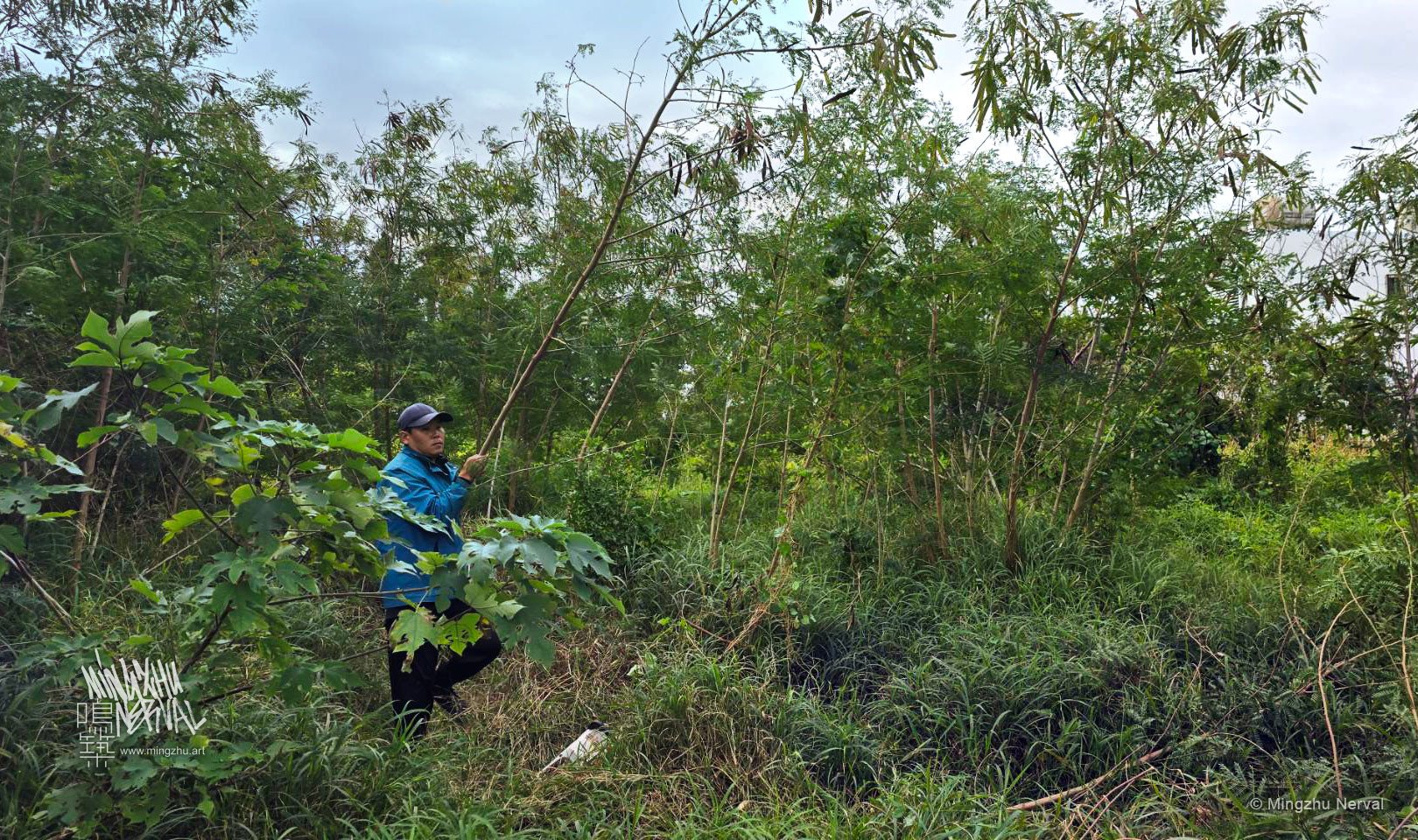
In the fight against invasive species, the local government and dedicated community volunteers have taken steps to manage the spread of river tamarind groves in Kenting National Park. These fast-growing plants are regularly removed, with efforts focused on cutting them down while still in their juvenile stages to prevent further dissemination. However, dealing with the aftermath presents a unique challenge—the thin trunks and twigs of the removed plants offer limited opportunities for reuse.

As part of the creation of the Hengchun Botany Academy Garden, Mingzhu Nerval collaborates with local environmentalists and carpenters to design an innovative garden structure that incorporates the river tamarind’s twigs. This creative initiative not only addresses the environmental challenge posed by these fast-growing plants but also explores exciting possibilities for upcycling. By transforming what was once a problem into a sustainable solution, the project highlights community collaboration and eco-friendly practices. It’s a beautiful step forward in showcasing how even nature’s challenges can inspire meaningful change.
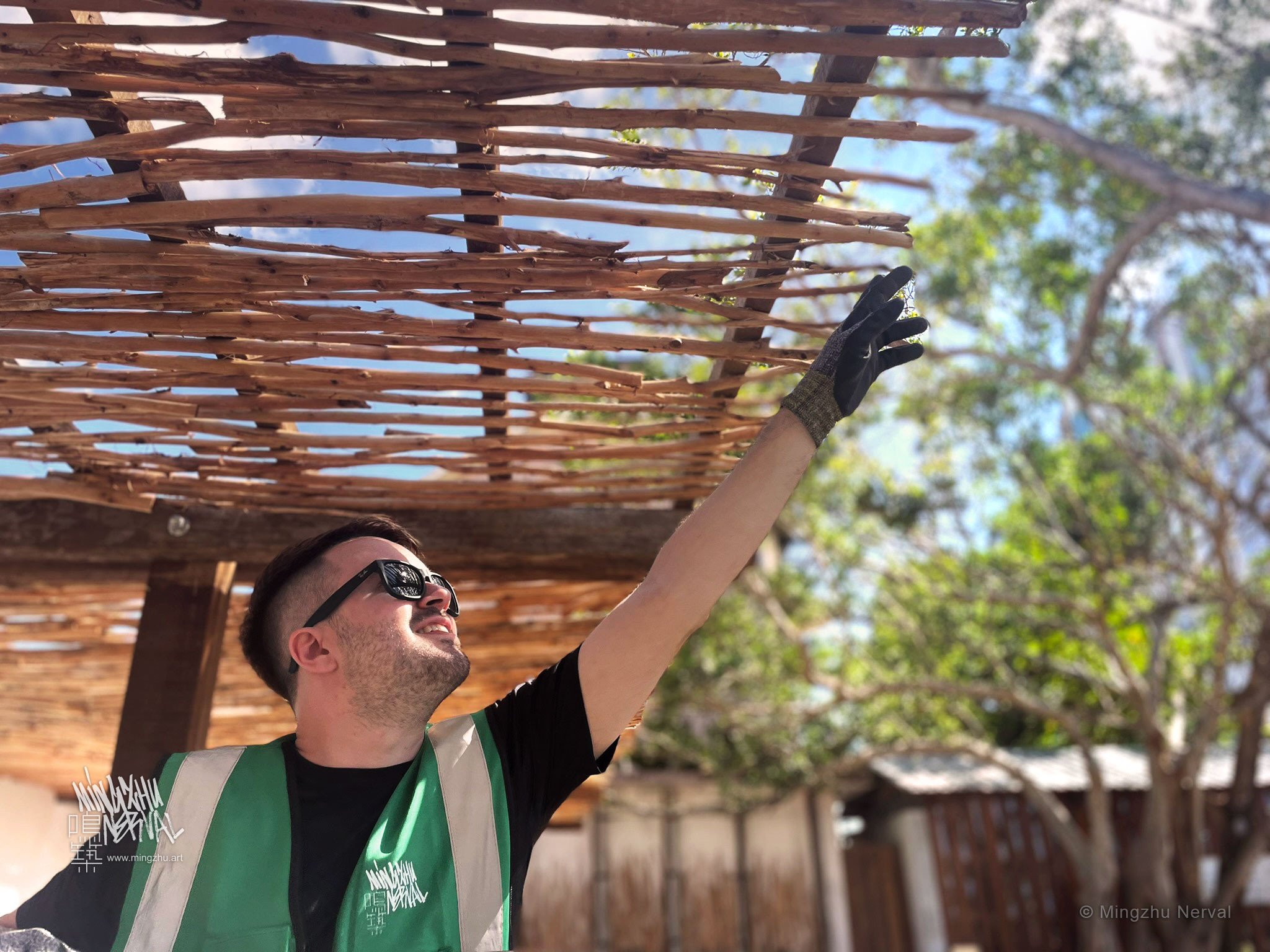
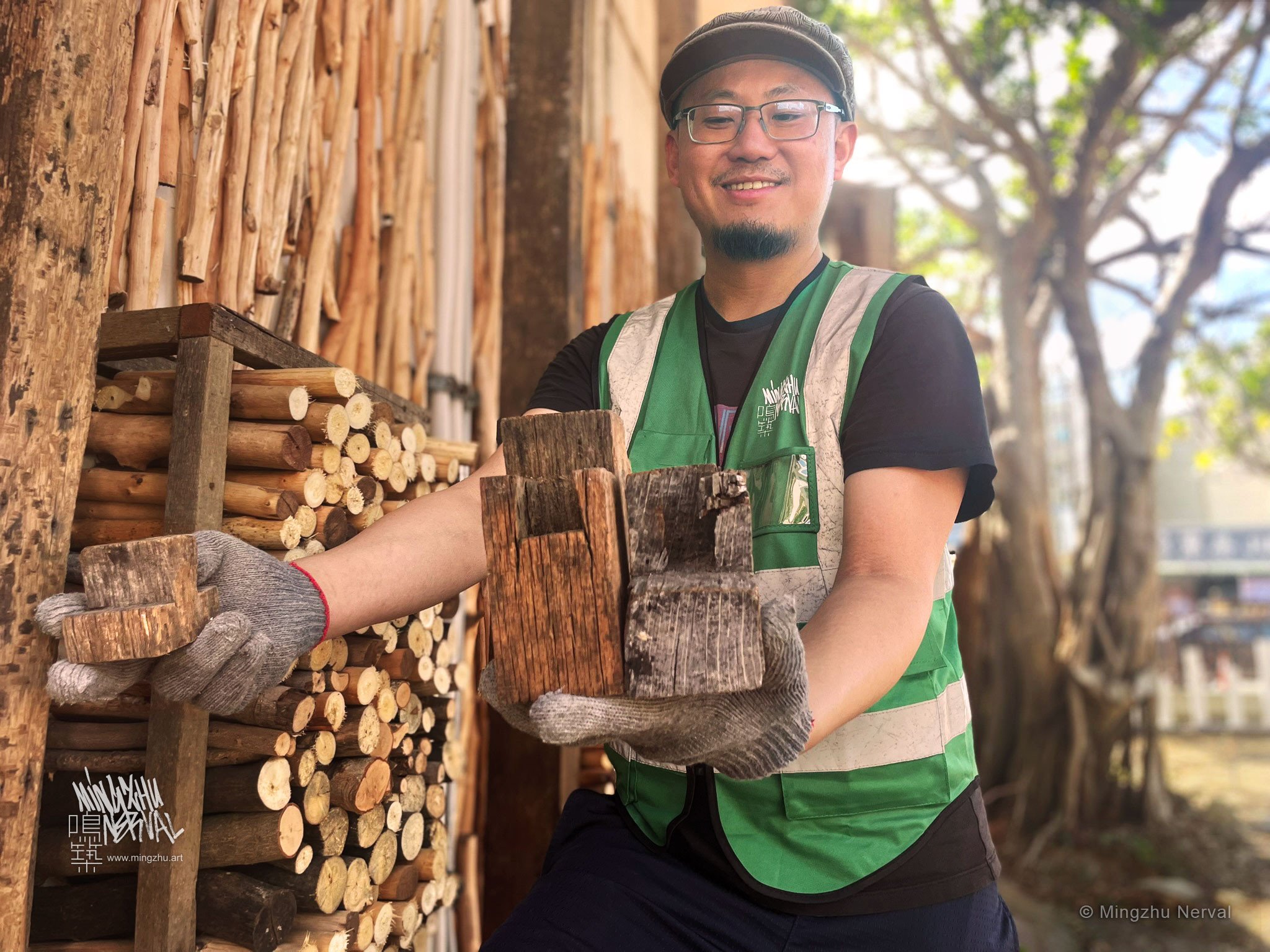
The twigs have been put to creative use, forming a garden shade structure that will provide shelter for the future outdoor classroom. They’ve also been repurposed as decorative elements on a blank wall, adding a touch of natural charm. To top it off, the twigs have been crafted into an “insect hotel,” offering a cozy habitat for local bees and butterflies to thrive. This craftsmanship and artful expression give new life from a environmental crisis.

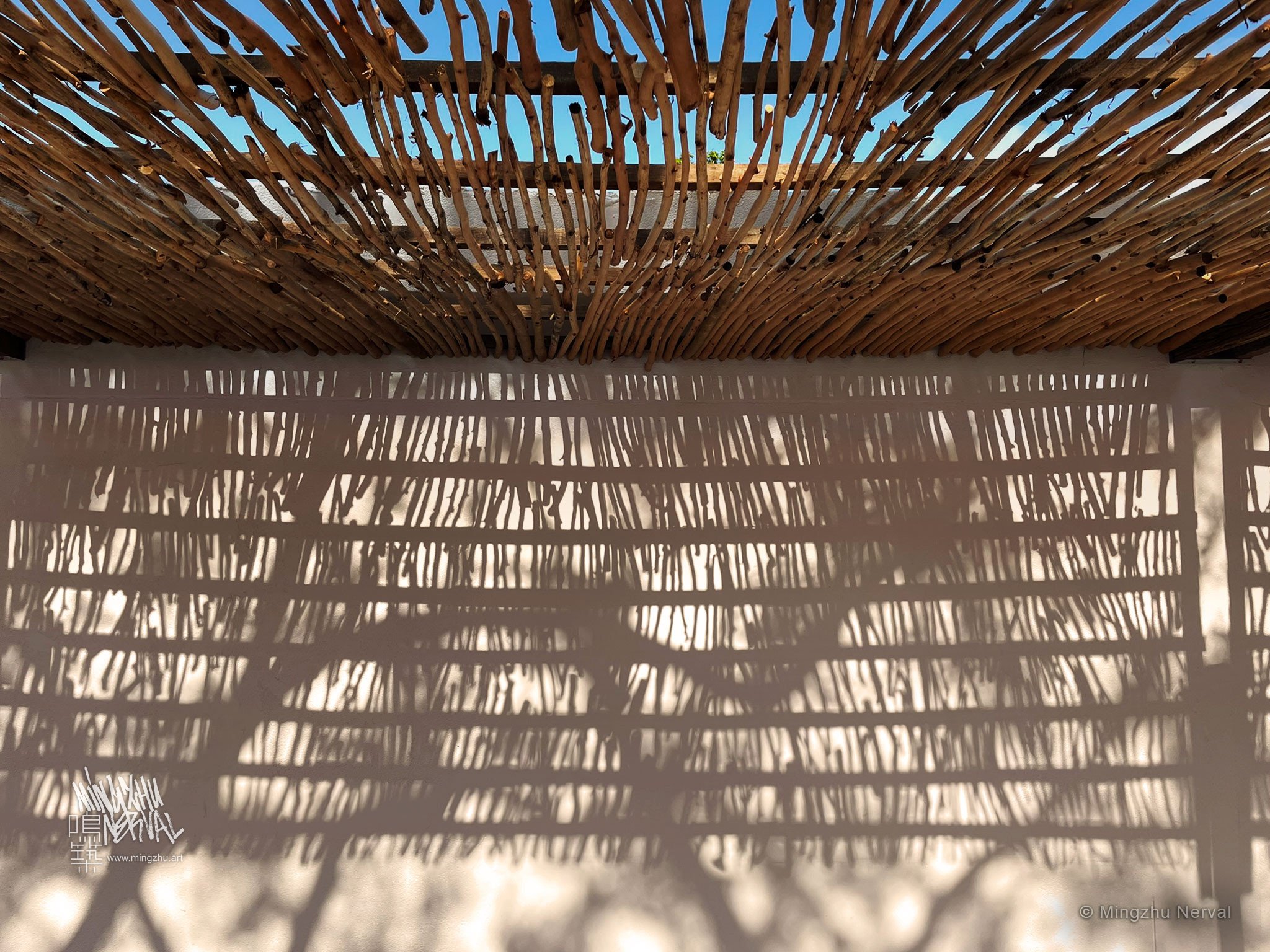
While the planting installation is still on its way, the space has already been transformed and looks so much better. We’re loving the interplay of light and shade created by the filtered sunlight—it brings such a serene and inviting atmosphere. The anticipation for the planting to arrive and complete the garden is growing, and we can’t wait to see the final vision come to life!
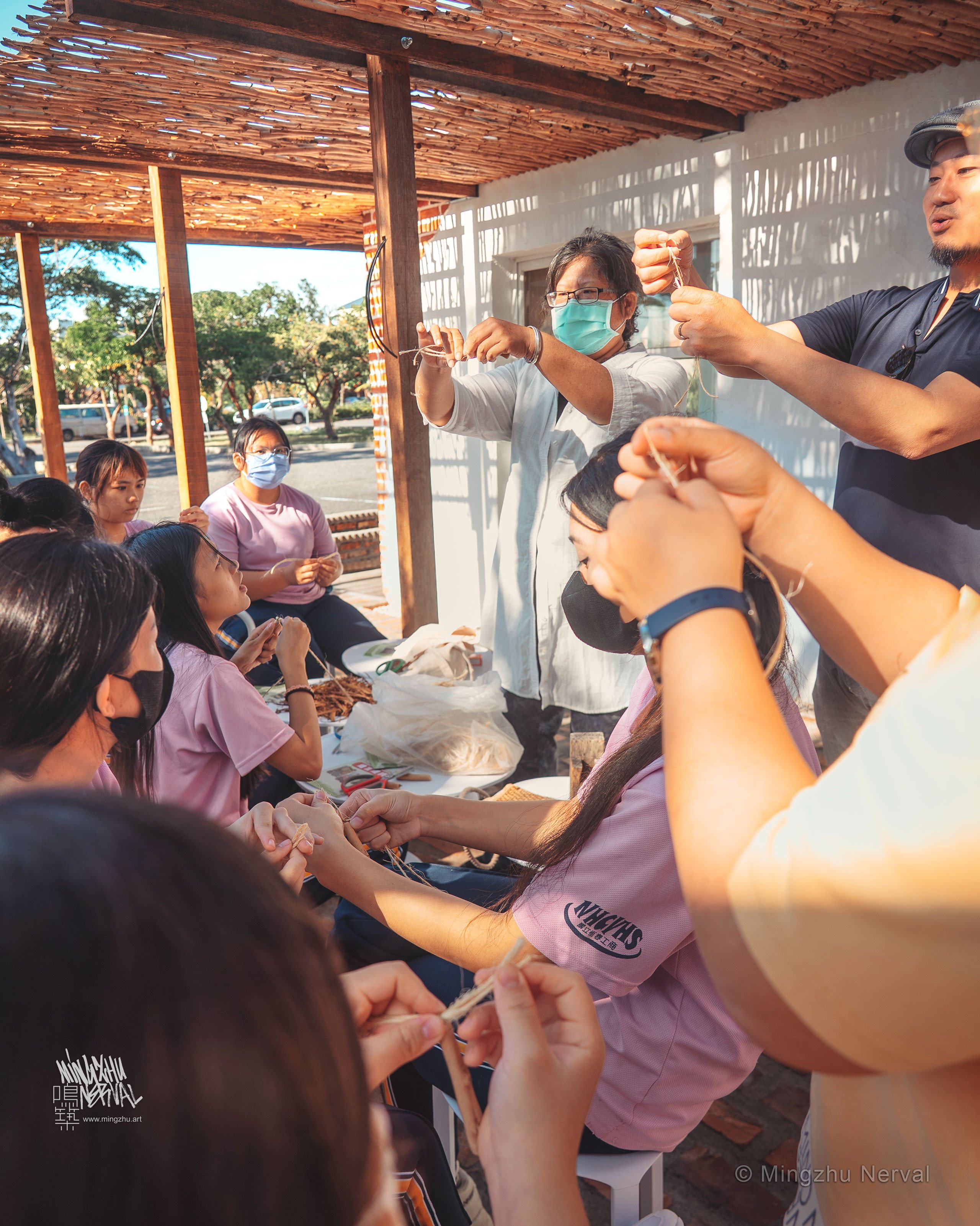
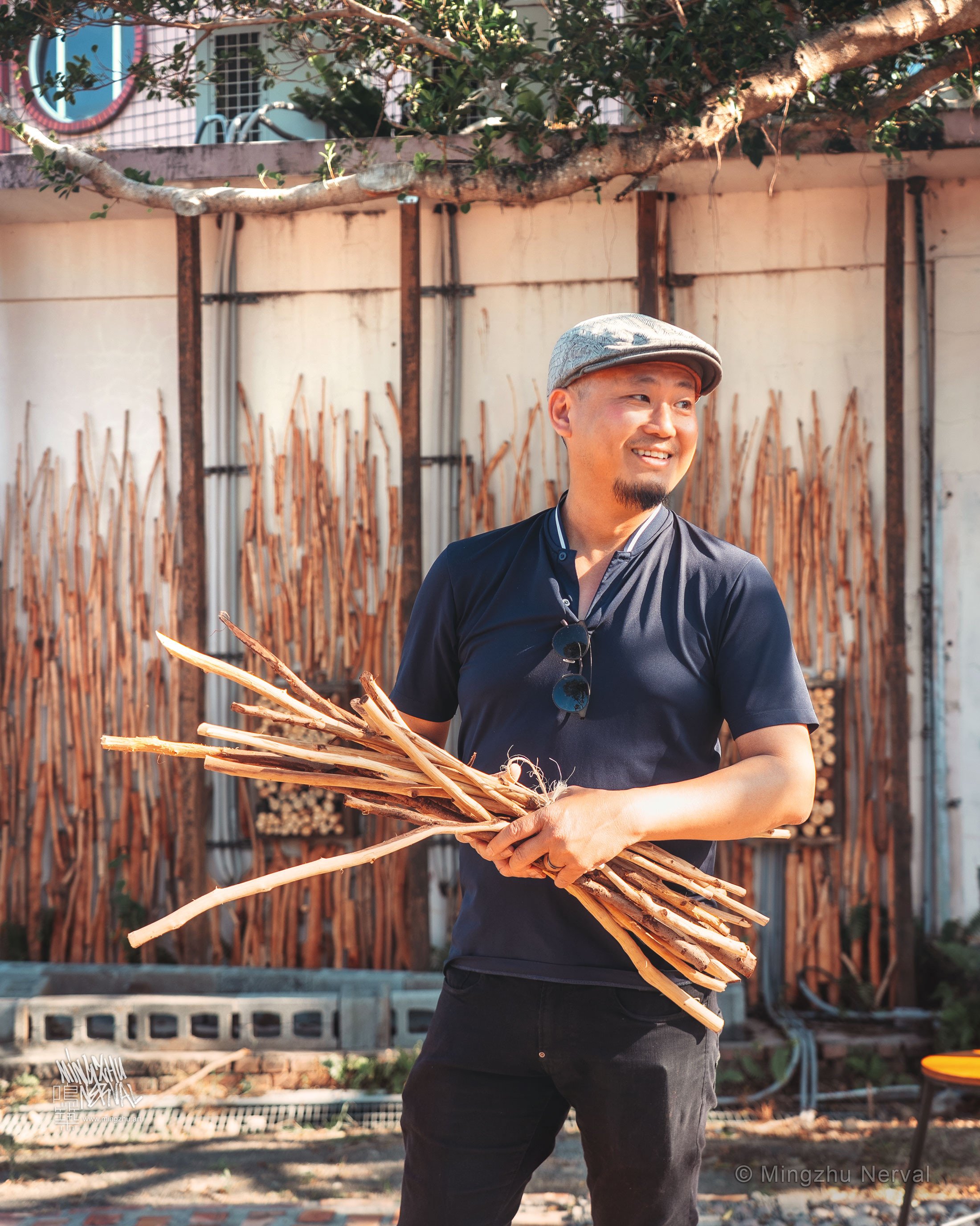
Chih-Wei took an inspiring step further by organizing workshops that brought local carpenters together with teachers and students. These sessions not only served as a platform to preserve and pass down traditional craftsmanship but also nurtured a stronger sense of responsibility and connection to the future garden. This collaborative effort beautifully bridges generations and fosters a deeper appreciation for the space they are creating together.
By transforming what was once a problem into a sustainable solution, the project highlights the power of ingenuity and community collaboration in promoting eco-friendly practices. It’s a beautiful step forward in showcasing how even nature’s challenges can inspire meaningful change.
